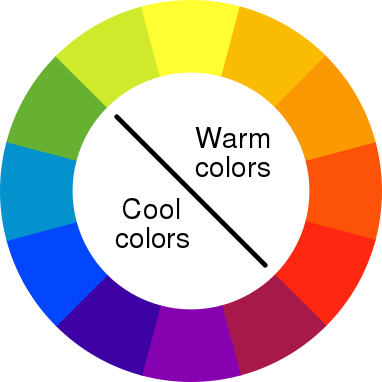WANT 20% OFF YOUR FIRST ORDER? SIGN UP NOW
Color Theory & Skintone – Part 1
Custom blending allows the technician to offer the ultimate manicure and pedicure service. Not only to customizes pinks and whites using formulas to complement or match your client’s skin tones, but also creating a look that is just for them and no one else. Customizing for your client can create the illusion of longer, sleeker nail beds that may not be achieved in the conventional methods. Customizing a color for that client that no other salon has is a great way to boost your service ticket and style.
In order to mix colors successfully (there is a science behind this), it is important to truly understand color. In part 1 of this series we will discuss color theory, and how it can relate to skintone.
Color Wheel

Color theories create a logical structure for color. Sir Isaac Newton used a glass prism to divide white rays of sunlight into the fanned colored wavelengths, which he named the spectrum. He diagrammed the seven spectral hues into a closed ring that followed the ordering of the colors as the appeared in the spectrum, and in the rainbow, thus creating the first color wheel.
A color circle, based on red, yellow and blue, is traditional in the field of art. The great advantage of Newton’s color circle over preceding linear ordering was that it revealed color relationships. Artists could see that the adjacent hues are related by color, not just by lightness or darkness, and that colors of highest contrast are located directly opposite each other on the wheel. There are also definitions (or categories) of colors based on the color wheel. We begin with a 3-part color wheel.
Primary: Red, yellow and blue. In traditional color theory (used in paint and pigments), primary colors are the 3 pigment colors that cannot be mixed or formed by any combination of other colors. All other colors are derived from these 3 hues.
Secondary: Green, orange and purple. These are the colors formed by mixing two primary colors together.
Tertiary: Yellow-orange, red- orange, red-purple, blue-purple, blue-green & yellow-green. These are the colors formed by mixing a primary and a secondary color. That’s why the hue is a two word name, such as blue-green, red-violet, and yellow-orange.
Value: value refers to the lightness or darkness of a color. Black, white and gray are used to create dimension, mood, rhythm and emphasis. When referring to pigments, dark values with black added are called “shades” of the given hue name. Light values with white pigment added are called “tints” of the hue name. What color is a highlight on a nail? What color is a shadow?
Warm vs. Cool Colors

Understanding how to identify a warm color or cool color and knowing how to warm up or cool down a color can help you create the perfect mix for your client. Both the Attraction Acrylic System and NSI Hard Gel Systems have a range of Warm to Cool hues that can be used when customizing your colors.
Warm colors are traditionally red, yellow, and orange.
To make a color warmer, you can add a small amount of a true yellow or red and create a whole new custom warm color. A yellow-green is a warm green, an example of a yellow-green is a fresh avocado. It is still green but it has a yellow undertone.
Cool colors are traditionally blue, green, and purple.
To make a color cooler, you can add a small amount of a true blue and create a whole new custom cool color. A blue-red is a cool red, an example of a blue-red is the color of red wine. It’s still red but it has a blue undertone.
Color and Skin Tones
The genes that determine your skin tone, hair, and eye color also determine what colors look best on you. When you study your own coloring, you will find that your skin, hair, and eyes have either blue (cool) or golden (warm) tones. Your inherited skin tone does not change; it simply deepens with a tan and fades with age.
The tone of your skin comes from three pigments, melanin (brown), carotene (yellow), and hemoglobin (red). It is the particular combination of these three pigments that gives you your unique skin tone.
Because your skin acts as a thin filter, it is the tone just under its surface that determines whether your skin is warm or cool. Cool skin tones have blue undertones, while warm skin tones have a golden undertone.
Determining Skin Tone
Some people’s skin tone is quite obvious, but for others it is subtle. Compare wrists and palms by placing a piece of white paper under your hand and wrist. Does it look pinkish/blue or golden/orange?
Don’t be fooled by hair color since some clients may dye and color their hair, it isn’t an accurate way to determine how warm or cool a color is. To determine your client’s skin tone it is best to do it on an area of skin without makeup and compare it to a white surface or white towel.
Complementing colors
If you are unfamiliar with customizing a color for your client, instead of matching, try complimenting. Even take a look to see what your client’s favorite lipstick color, blush, or eye shadow happens to be. Chances are, they are already wearing the “right” colors.
To pick a complementing color for your client choose your desired system, and select a color that is either more blue or more golden. It’s a good practice to have some sample tips made up of your blushes and pinks to compare to your clients skin tone before starting the service.
TIP: It’s easy to make some samples to reference, just press out several beads of product onto a Clear nail tip and allow to cure so that you can hold it over the client’s finger to compare.
